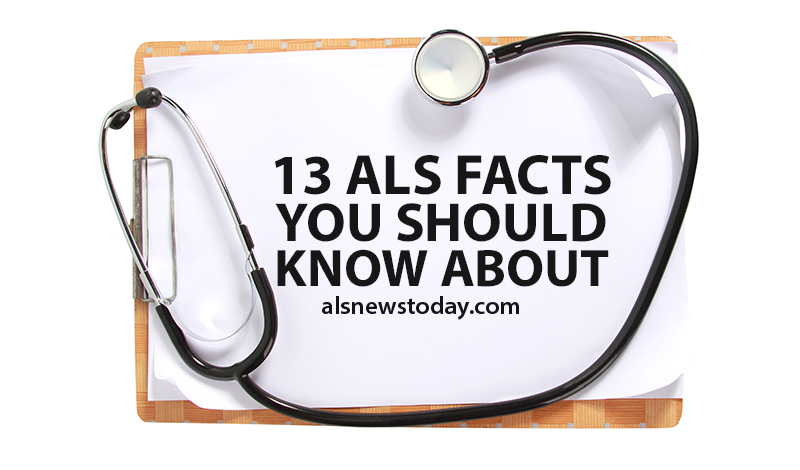13 ALS Facts You Should Know About


ALS, or amyotrophic lateral sclerosis, also known as Lou Gehrig’s disease, is a progressive neurodegenerative disease that affects nerve cells in the brain and the spinal cord.
A-myo-trophic comes from the Greek language. “A” means no. “Myo” is referring to the muscle, and “Trophic” means nourishment – All put together: “No muscle nourishment.”
Usually, when a muscle has no nourishment, it “atrophies” or wastes away.
“Lateral” identifies the areas in a person’s spinal cord where portions of the nerve cells that signal and control the muscles are located. As this area degenerates it leads to scarring or hardening (“sclerosis”) in the region.
There are two different types of ALS – sporadic and familial.
According to the ALS Association, here are some facts you should know about ALS:
- ALS is not contagious in any way.
- Most people who develop ALS are between 40 and 70 years old and are usually diagnosed around the age of 55.
- More than 50% of all patients with ALS live more than 3 years after being diagnosed, despite the average life expectancy of a person with ALS being about 2 to 5 years. It is variable, and it’s possible to live with the disease for five years and more. 20% of people with ALS live for 5 years, 10% will survive for 10 years and 5% will live for 20 years or more.
- Sporadic – the most common form of ALS in the U.S. represents 90% to 95% of all cases.
- According to the ALS CARE Database, 60% of people with ALS in the database are men and 93% of patients in the database are caucasian.
- Familial ALS (FALS) means the disease is inherited. In those families, there is up to a 50% chance each offspring will inherit the gene mutation and may develop the disease.
- Once it starts, ALS always progresses and it can eventually take away the ability to walk, dress, write, speak, swallow, and breathe. The speed and order of the disease’s progression varies from person to person.
- It is not uncommon to have periods lasting weeks to months where there is very little or no progression the disease. In some rare cases, a significant improvement and recovery of lost function may occur. Unfortunately, these are usually transient.
- In the U.S., approximately 6,400 people are newly diagnosed with ALS every year. The incidence of ALS is 2 for each 100,000 people, and it is estimated that more than 20,000 Americans may be living with ALS at any given time.
- ALS can affect anyone. It happens throughout the world with no racial, ethnic or socioeconomic boundaries.
- Military veterans are approximately twice as likely to develop ALS.
- ALS early symptoms often involve muscle weakness or stiffness.
- There can be significant costs for medical care, equipment, and home health caregiving later in the disease. It is important to learn about health plan coverage and other options.






